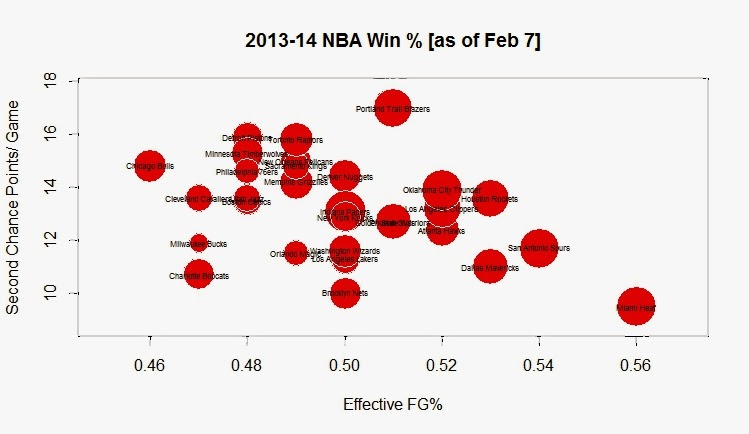This chart helps explain why the Pacers are so dominant--they strap. I collected team data on Feb 13 from NBA Stats on offensive rating (points scored per 100 possessions), defensive rating (points allowed per 100 possessions), and net rating (offensive rating minus defensive rating). I measured offensive rating with the size of the circle next to the team (larger circles equate to greater relative offensive efficiency), defensive rating on the horizontal axis, and net rating on the vertical axis.
With respect to net rating, a team wants to be above the horizontal bar because that signals they score more points than they allow per 100 possessions . With respect to defensive rating, the further left the team falls on the chart, the better as that signifies that the team allows fewer points per 100 possessions. As the chart shows, only four teams--Pacers, Thunder, Warriors and Bulls--allow fewer than 100 points per 100 possessions. The Pacers, however, are anomalous--and exceptional--in just how few points they allow per 100 possessions (93.6). To give some scope of this defensive efficacy, the Jazz, who have the worst defensive rating, allow 107.3 points per 100 possessions.
With respect to net rating, a team wants to be above the horizontal bar because that signals they score more points than they allow per 100 possessions . With respect to defensive rating, the further left the team falls on the chart, the better as that signifies that the team allows fewer points per 100 possessions. As the chart shows, only four teams--Pacers, Thunder, Warriors and Bulls--allow fewer than 100 points per 100 possessions. The Pacers, however, are anomalous--and exceptional--in just how few points they allow per 100 possessions (93.6). To give some scope of this defensive efficacy, the Jazz, who have the worst defensive rating, allow 107.3 points per 100 possessions.

